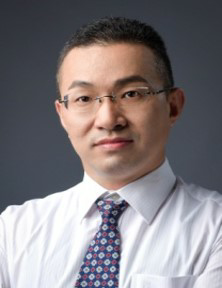Jichun Ye
Solar Cells
Ningbo Institute of Materials Technology and Engineering, Chinese Academy of Sciences,1219 Zhongguan West Road, Zhenhai District, Ningbo City, Zhejiang Province 315201, P.R.China
Email: jichun.ye@nimte.ac.cn
Biography
|
Prof. Ye received his bachelor degree from the University of Science and Technology of China in 2001, and Ph.D degree from University of California, Davis in 2005, both in the field of materials science. After graduation, he joined Spansion Inc. (a spinoff of AMD in the business of NOR flash memory) and later on moved to solar cells companies in Silicon Valley. In August 2012, he joined Ningbo Institute of Materials Technology and Engineering (NIMTE), CAS, to continue his researches in silicon-based photovoltaics and wide-bandgap semiconductor devices. He is now the deputy director of New Energy Technology Institute, a subsidiary institute to NIMTE. He, as a group leader, has built a research team with 17 full-time staffs (6 professors and 5 associate professors) and 60 graduate students. His group has completed more than 60 research projects and 2 technology transfer projects in the past 10 years. He has published more than 200 journal papers, 3 book chapters and applied/awarded 220/80 patents. |
|
|
Abstract for Presentation
The Perspectives of Carrier Passivation and Transport Mechanisms of TOPCon Solar Cells
Tunnel Oxide Passivating Contact (TOPCon) structure, as a promising passivating contact design, has gained extensive attention in both academia and industry due to its potential in device efficiency and manufacturing cost for silicon (Si) solar cells (SCs). TOPCon structure composed of an ultra-thin silicon oxide layer together with heavily doped polysilicon could avoid direct contact between the c-Si substrate and metal electrode. Such a design could provide excellent surface passivation while promoting carrier extraction efficiency, resulting in a laboratory efficiency record of more than 26.0% [1], and an efficiency of more than 25% in commercial applications (p-type and n-type commercial size silicon wafers produced by Longi and Jinko, respectively). Further promotion of device performance is challenging, which requires a deeper theoretical understanding of such a TOPCon structure or more innovative designs/schemes. This report will introduce the recent researches we have done to uncover carrier passivationand transport mechanisms of the key structure of TOPCon (i.e., poly-Si/SiOx/c-Si), where the dominant factors of carrier passivation (i.e., field-effect passivation or/and chemical passivation) and carrier transport mechanisms (i.e., tunneling or/and pinhole) as shown in Figure 1 were clarified in detail.[2] In addition, we will also introduce a feasible and effective scheme by introducing carbon or nitrogen-doped polysilicon films with the purpose of promoting the photoelectrical performance of TOPCon SCs.[3]
References
[1] A. Richter *, R. Müller, J. Benick et al, Nat. Energy, 6 (2021) 429-438.
[2] Y. Lin, Z.Yang*, J. Ye* et al, Energy Environ. Sci., 14 (2021) 6406.
[3] Z.Yang, Z. Liu, M. Cui, J. Ye* et al, Cell Rep. Phys. Sci., 2 (2021) 100667.
WELCOME TO CHINA TO ATTEND THE ICANS
23-26 August, Nanjing, China
Connect with us:



